
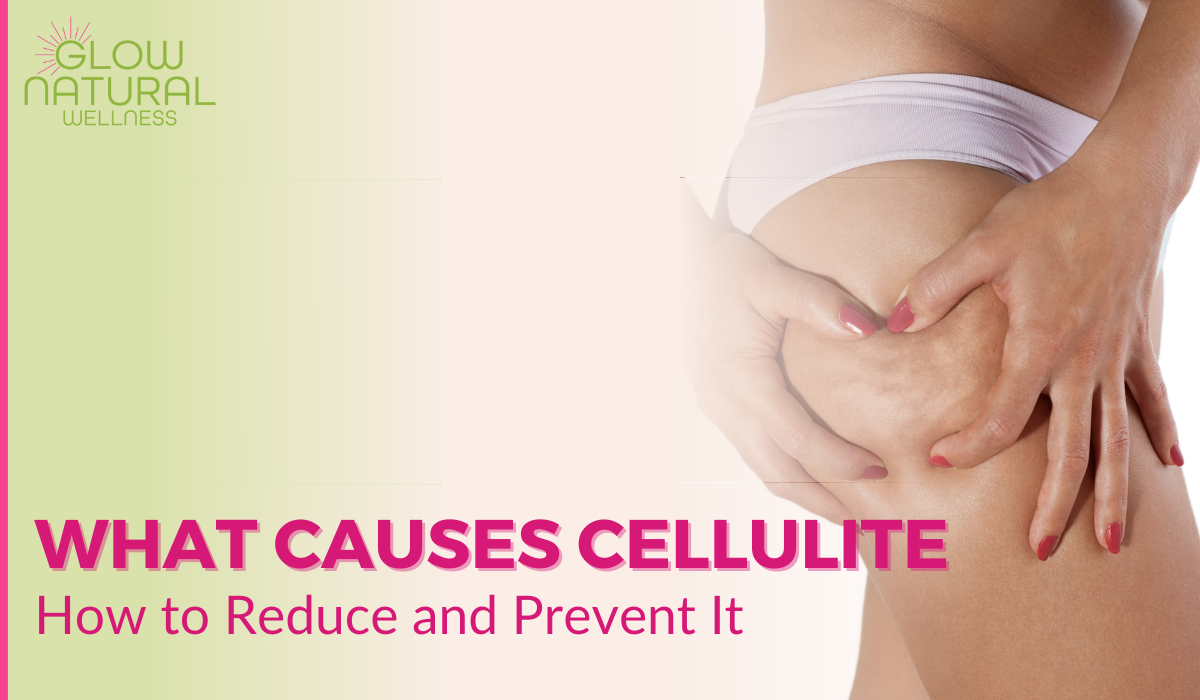
What Causes Cellulite & How to Reduce and Prevent It
If you’ve ever looked in the mirror and seen the dimple skin on your thighs or butt, then you know that cellulite is something that just about every woman has to deal with. It’s frustrating because it can make us feel self-conscious and less confident about our bodies.
Here’s the good news: cellulite doesn’t have to be a problem for you. It’s true that there are no quick fixes for getting rid of cellulite. But there are some things that can lessen the appearance of cellulite temporarily.
In this blog post, we’ll discuss what causes cellulite, how to recognize it, and how to get rid of it.
What is exactly cellulite?
Cellulite is a common skin condition that causes dimpling, or the “cottage cheese” effect, in the skin.
It appears that cellulite develops due to the interaction between the fat and the connective tissue which is just below your skin. Cellulite occurs when fat cells push against the connective tissue beneath the skin and cause dimples on the surface. It develops when the body stores too much fat in one place and doesn’t distribute it evenly throughout the muscle and soft tissue.
In young adulthood, it is common to have some cellulite on the thighs and hips. This is due to the way fat is distributed in your body as you grow older, however, cellulite becomes much more common in middle age.
Typically, cellulite develops on areas of the body that tend to store more fat, like the butt, thighs, and belly for some people the back of the arms as well.
And now for the good news: cellulite is completely normal—it affects most women at some point in their lives, and even supermodels have it! In fact, a whopping 80 to 90% of women over the age of 20 have some degree of cellulite.
Cellulite is not just about being overweight—it’s about having more fat than muscle in a given area of your body. That’s why even leaner people can have cellulite: if they have more fat than muscles in their arms or legs, then they might develop cellulite there too! This means anyone can get cellulite—even if they’re thin!
The bad news is that there’s no way to prevent cellulite entirely—it’s simply part of being human (and being female), and it’s a problem that’s only getting worse as we get older.
But here’s where things get exciting: there are ways to make your cellulite less noticeable—or even invisible! These strategies are healthy for you and simple enough to fit into your daily routine without taking up tons of time or money. The key is finding what works best for your body type and lifestyle—it might take some experimenting to find what works for you.
Prefer to watch? Click below to watch my recent video on cellulite and how I eliminated mine for good!
What Causes Cellulite?
It’s no secret that cellulite is something that most women have to deal with. But what are the causes of it? Is there anything we can do about it?
Here’s the deal: cellulite is actually multifactorial, meaning there are several reasons why one woman might have more cellulite than another. The exact cause of cellulite is not known, but it seems to be related to the interaction between fat and connective tissue. Plus, there are many factors that may contribute to it including age, genetics, hormone imbalance, skin quality, medication you’re taking, and lifestyle choices.
- Age: As we age, our skin becomes thinner and less elastic, which can lead to more problems with dimpling and puckering. Women who are older tend to lose the amount of collagen in their skin more quickly than younger women do, which makes it harder for them to retain their youthful appearance as they age.
- Genetics: Genetics play a role in how much fat your body stores in certain areas and how much connective tissue you have to support that fat—and these are both factors in the development of cellulite.
- Hormone imbalance: Women tend to experience more estrogen-related changes during their menstrual cycle when they are premenstrual or menopausal, which can increase their risk of developing cellulite.
- Skin quality: If you have sensitive or dry skin, it will be more prone to dimpling and puckering because it doesn’t have as much elasticity as normal skin would.
- Medication use: Certain medications, like steroids, can cause your body’s connective tissue to become stiffer, which could make it harder for your skin and muscle tissue to stretch during movement like walking or exercise classes at the gym.
- Lifestyle choices: Women who sit around all day with little exercise tend to gain weight in their hips and thighs faster than runners do because there’s more fat to store in those areas.
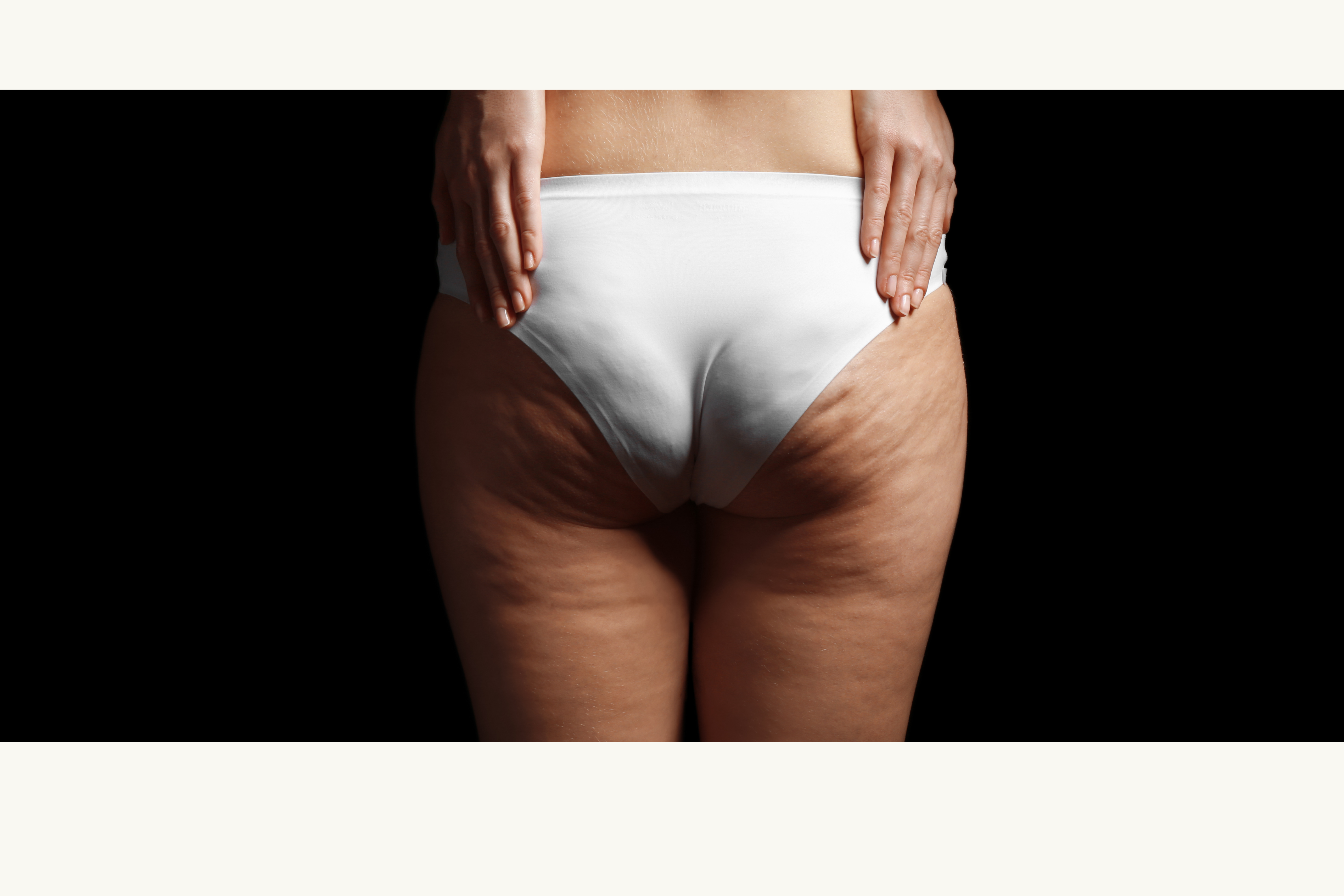
Why Women Tend to Develop More Cellulite Than Men
Cellulite can affect both men and women, but it’s much more common in women. Women tend to develop more cellulite than men because their connective tissue—fibrous septae—is arranged differently than in men.
The fibrous septae are basically bands of connective tissue that attach your skin to your body. Men have thicker bands of connective tissue that are arranged in this crosshatch pattern, which actually prevents that from puckering up through in between the fibers; women have thinner bands of connective tissue that attach the skin to the body vertically. This allows the dimples and puckered areas of skin to form more easily in women than in men.
Additionally, women get more dimples because they have a higher percentage of body fat than men which allows their skin to pucker and dimple more easily.
Another reason for this is the fact that women tend to have thinner skin than men do—which also means that when we gain weight around our hips and thighs (where our cellulite tends to develop), those areas will be more visible from the outside because they don’t get covered up as much by all that extra padding!
And as we age, our bodies produce less collagen and elastin (which help keep skin smooth), so the appearance of cellulite worsens.
The Role of Estrogen on Cellulite Formation
Cellulite can be a real struggle for women who are going through menopause or are already post-menopausal. The most common cause of cellulite is a reduction in the hormone estrogen.
As we age, our estrogen levels begin to decline. This loss of estrogen can lead to a number of side effects, including the development of cellulite.
Let’s break down how this works:
1. Lower levels of estrogen can contribute to vascular changes in the skin, which can lead to increased permeability and fluid retention under the skin increasing the appearance of cellulite.
2. Decreased estrogen may also mean a reduced production of elastin and collagen, which helps to keep our skin firm and toned.
3. When estrogen levels drop, our connective tissue becomes weaker and the skin also becomes thinner. Also, the loss of estrogen is associated with lower muscle mass and increased fat storage. This combination of all of these factors is the perfect storm for the development of cellulite.
4. Estrogen is an anabolic hormone—it increases muscle mass—just like testosterone does in men! Estrogen is also important for maintaining lean muscle mass in women by increasing the production of collagen and elastin—two proteins that help keep our skin firm and toned.”
But when does estrogen decline in a woman?
The hormone levels of women can fluctuate and start to decline up to 10-15 years before menopause, known as perimenopause. This can cause a lot of problems for women because it leaves them with less elasticity in their skin, which means that they get sagging skin and cellulite.
As estrogen levels decrease and skin sags, it’s common for women to notice an increase in the appearance of cellulite. What’s more, for women who have had children during their postpartum period—that is, after giving birth—the hormone levels plummet and leave new moms with some annoying cellulite and sagging skin.
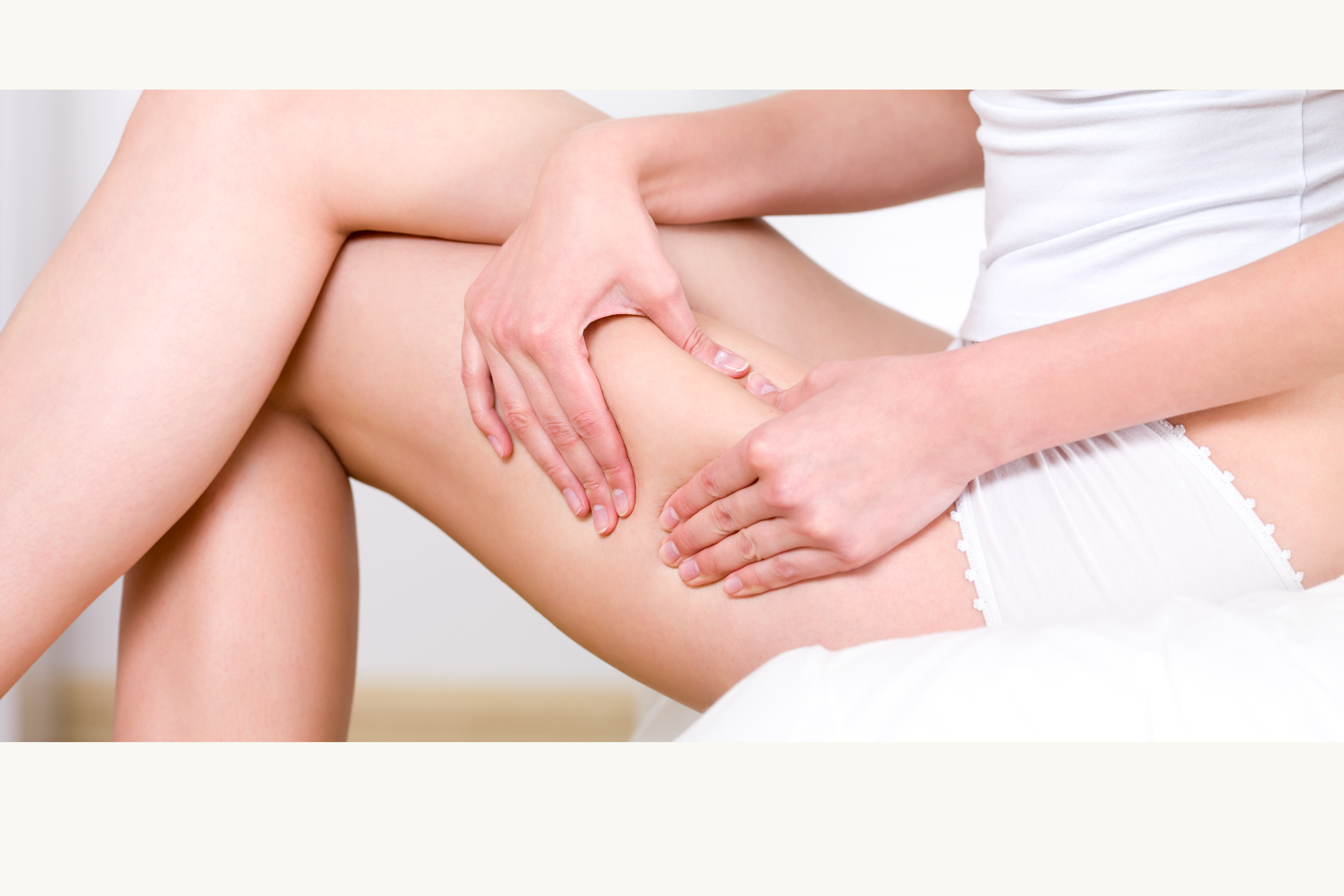
Treatment Options for Reducing the Appearance of Cellulite
When you’re looking for a quick fix to get rid of cellulite, it’s easy to get caught up in the hype about lotions, massages, and treatments that claim to help.
But what does science say?
A meta-analysis of over 67 studies found that there’s not much evidence to support any one treatment or quick fix. In fact, most of these treatments don’t work at all!
So what can you do? The good news is that there are actually things you can do to reduce the appearance of cellulite—even if they don’t get rid of it completely. There are some treatments that are effective and have lasting effects like replacing your hormones.
Bioidentical Hormone Replacement Therapy and Cellulite
There are many ways to reverse cellulite, but one of the most effective treatments is called bioidentical hormone replacement therapy.
Bioidentical hormones are those that are naturally produced in your body and work with your body’s natural chemicals to help regulate your health. They’re not synthetic like other hormone treatments, so they don’t have side effects like weight gain or bone loss. In fact, they can actually help reduce cellulite by treating the root cause: lack of estrogen in women.
Bioidentical estrogen (one of the hormones that are missing in women with cellulite) affects the vascular activity of the skin, as well as fat levels and collagen and elastin production. When you have less estrogen than normal, it means that your skin isn’t getting enough oxygen—which contributes to changes in those tissues that contribute to the formation of cellulite. By replacing estrogen back to healthy levels, you can prevent changes in those tissues that contribute to the formation of cellulite.
Learn more about safe and effective Bioidentical hormone replacement options at Fixhormones.com
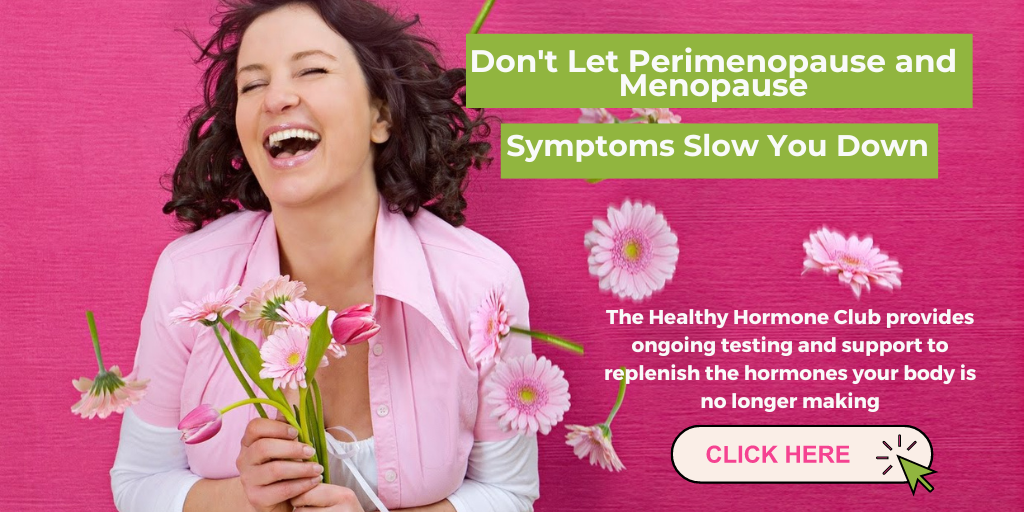
Natural Ways to Reduce the Appearance of Cellulite
There really isn’t any way to completely prevent the development of cellulite. However, there are a few things that you can do to decrease the amount of cellulite that you have now, or that you might develop in the future.
1. Maintain a healthy weight.
This is important not just because it can improve your health overall, but also because being overweight can increase the amount of fat under your skin, which increases the likelihood of dimpling.
While it is true that thin people can develop cellulite, the more fat you have under your skin, the higher chance it is going to push through your connective tissue and cause dimpling. Keeping your body fat percentage at a healthy level will definitely improve the appearance of cellulite.
2. Do strength training exercises!
Strength training firms your muscles underneath your skin—which in turn reduces the appearance of cellulite by pushing out this dimpling from underneath with those muscles to smooth out your skin! This is probably one of the best strategies for reducing cellulite.
When you’re weightlifting, it’s important that you don’t just lift weights that are easy to lift. If you do, you won’t build muscle and you won’t get the benefits of strength training.
When we say strength training, this means lifting a weight that you cannot do more than 10 to 15 reps of a weight. You need to be pushing yourself with weights that are challenging for you—you’ll know because when you reach 10 or 15 reps, your arms will feel like they’re going to fall off! When this happens, it means that you’ve reached your limit for that day and are ready to increase the weight. Once you get to 10 to 15 reps, you have to increase the weight. That’s what we call strength training!
Strength training is all about mastering a movement so that it becomes natural and easy for your body to execute—this way when your body is under stress from other activities like running or playing sports, it has strong muscles to rely on!
3. Do some cardiovascular exercises.
One of the most important aspects of cellulite reduction is cardiovascular exercise. Cardiovascular exercise isn’t just good for your heart—it’s also good for your skin.
Cardiovascular exercise helps keep your circulation strong, which means your lymphatic system is working properly, too. If you’re not familiar with the lymphatic system, it’s basically a bunch of vessels and organs that carry fluid away from areas where it needs to be removed. The lymphatic system helps rid your body of toxins and waste products like fat cells and other stuff you don’t want hanging around in your system.
When you’re doing cardiovascular exercise regularly (and we mean at least three times per week), you’re helping keep your lymphatic system functioning properly. And that means fewer fat cells hanging out on your thighs or anywhere else!
It’s important to remember that overdoing cardio can actually break down your muscle, which makes your cellulite worse.
4. Check out whole-body vibration therapy.
Whole-body vibration therapy is a fantastic way to get rid of cellulite. It’s safe, it’s effective, and it works quickly—but what is whole-body vibration therapy? Well, it’s pretty much exactly what it sounds like: you stand on a machine that vibrates your entire body at once. And this has a reflexive response in several different directions at once.
And why does it work?
Well, your body has a reflexive response when it encounters vibrations from the machine. And what does this mean? It means that your muscles tense up and contract all at once, which helps circulation throughout your body—including the lymphatic system. This is important because it helps with lymphatic drainage (which can cause the appearance of more cellulite).
The best part about whole body vibration therapy is that it’s safe for anyone who wants to try it out—no matter what their fitness level is!
5. Drink plenty of water.
Drinking water is one of the best ways to keep your skin looking fresh and healthy. It helps flush out toxins, so it’s great for your skin. Water also helps improve circulation and overall hydration, which can improve the look of your skin as well. So, if you’re dehydrated, it’s going to make your skin look worse.
6. Avoid smoking.
Smoking damages your skin by disrupting the body’s ability to make collagen, which is a key component of our skin. It also decreases healthy circulation. So, the combination of these two factors makes you more likely to develop cellulite.
If you smoke but still want to reduce the appearance of your cellulite, there are some things that can help: drinking bone broth or taking collagen supplements can be very effective in helping to restore that collagen elastin bone and broth contains collagen, which helps keep your skin supple and firm and elastic—and this will help reduce the appearance of cellulite.
7. Dry brush daily.
Dry brushing is another great thing you can do—it improves blood flow and helps move lymphatic fluid through your body, which also increases circulation to your skin. Dry brushing involves using a dry brush and brushing in one direction—normally towards your heart—to avoid bruising.
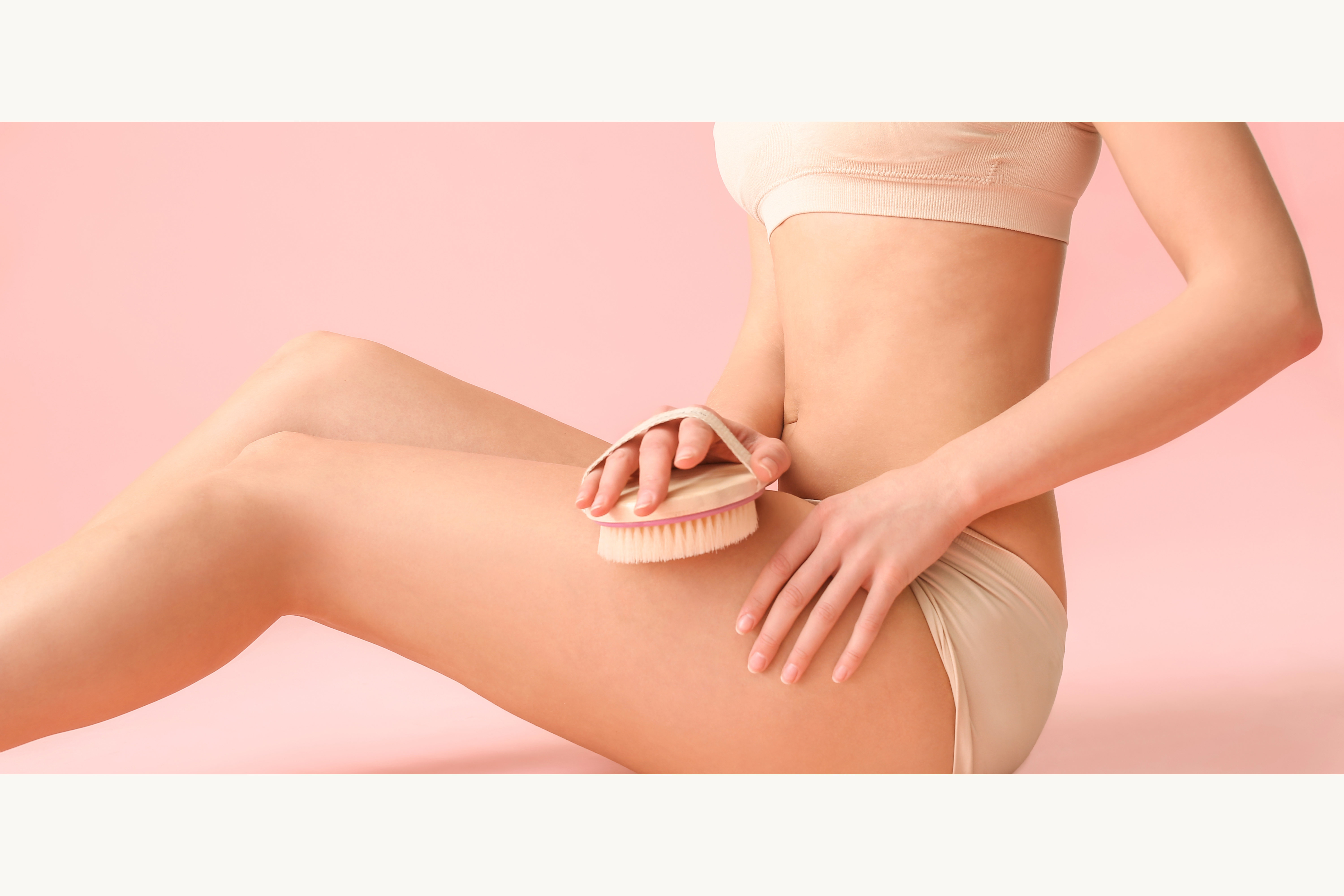
8. Try out some cellulite reduction procedures.
If you’re looking to get rid of cellulite, you might be wondering what the most effective treatments are. It turns out there is a wide range of options, and each one has its own advantages and disadvantages. These are some cellulite reduction procedures that you can have done at a dermatology office or a med spa:
- Radiofrequency – this can improve the thickness and elasticity of your skin
- Skin tightening – which increases collagen production in your skin, making it more elastic and smooth
- EMS sculpt – this stimulates your muscles and helps reduce the size of fat cells in those areas
- Ultra so habitation – ultrasound waves can actually shrink fat cells in those areas
A new procedure called collagenase clostridium histolyticum-aaes (Qwo™): is injectable and works on a fibrous set day to reduce pull/smooth out dimples.
9. Try doing massage therapy.
Massaging specific areas can increase circulation in those areas and help break up the buildup of toxins or excess fluids that may be contributing to cellulite formation.
If you’ve tried everything else with no luck, consider getting professional help. You might just be surprised by what happens next!
Takeaways
Cellulite is a common complaint among women, and it can be a serious source of embarrassment. It’s not just something we have to deal with—it’s actually a pretty complex issue.
While many factors contribute to developing cellulite, genetics plays a major role in whether or not you develop cellulite. Other factors include age (cellulite typically develops with age), diet (poor eating habits can contribute to cellulite), hormones (women tend to develop more cellulite than men), and weight gain/loss (not gaining or losing weight can contribute to preventing and treating cellulite).
There are many ways to get rid of cellulite, but some are more effective than others. There’s no one-size-fits-all solution for cellulite and what works for one person might not work for another. Keep in mind that your diet and lifestyle will play a big role in the health of your skin, and any treatment you choose should be used as an addition to good health and nutrition.
- Posted
- in Hormones
- By Dr. Michelle




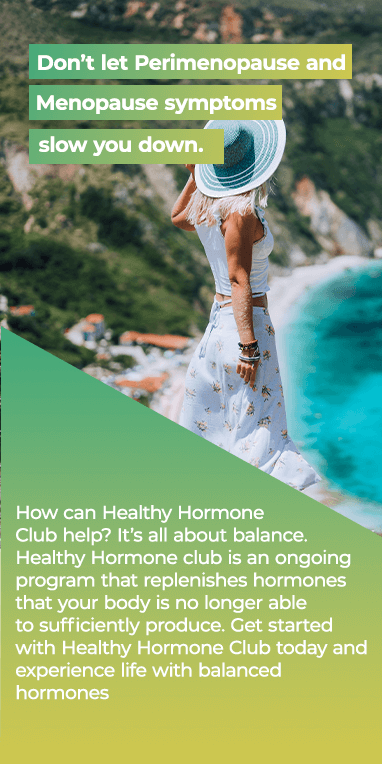

97 Comments
I would love to see your anti cellulite routine.
Thanks
Thank you ever so for you post.Thanks Again. Really Great.
I really enjoy the article.Really looking forward to read more. Great.
Thank you ever so for you article.Much thanks again. Keep writing.
wow, awesome post.Really looking forward to read more. Want more.
A round of applause for your article post.Much thanks again. Really Cool.
A round of applause for your blog.Thanks Again. Will read on…
I am so grateful for your blog article.Really looking forward to read more.
Thanks a lot for the blog article.Much thanks again. Want more.
wow, awesome post.Much thanks again. Really Cool.
I really like and appreciate your post. Want more.
Thanks for the blog. Want more.
I am so grateful for your article. Much obliged.
This is one awesome blog post.Much thanks again. Fantastic.
Thank you for your post.Really looking forward to read more. Keep writing.
A big thank you for your article post.Much thanks again. Awesome.
Im thankful for the article.Really looking forward to read more. Keep writing.
Thanks a lot for the blog. Keep writing.
Muchos Gracias for your blog.Really looking forward to read more. Much obliged.
Fantastic blog article.Really looking forward to read more. Really Great.
Very informative article post.Thanks Again. Cool.
Thank you ever so for you post.Really looking forward to read more. Fantastic.
I loved your article post.Really thank you! Will read on…
I am so grateful for your blog.Really thank you! Will read on…
Muchos Gracias for your blog article. Cool.
I value the article post.Much thanks again. Fantastic.
Say, you got a nice blog article.Much thanks again. Awesome.
Thanks for the blog.Much thanks again. Will read on…
Im obliged for the post.Much thanks again. Cool.
I think this is a real great article post.Really thank you! Want more.
Im obliged for the blog article.Really looking forward to read more. Really Cool.
I cannot thank you enough for the blog post. Much obliged.
Thanks for the article post. Cool.
Enjoyed every bit of your post.Really thank you! Much obliged.
Really appreciate you sharing this blog post.Really thank you! Will read on…
Hey, thanks for the blog. Fantastic.
Thanks for the blog post.Really thank you! Keep writing.
Very informative article post.Really thank you! Really Great.
Thanks-a-mundo for the blog.Really thank you!
Really appreciate you sharing this article post.
Thanks for the blog. Fantastic.
Thanks-a-mundo for the article.Really thank you! Want more.
I loved your post.Thanks Again. Really Great.
Enjoyed every bit of your blog.Much thanks again. Really Great.
I really like and appreciate your blog article.Really looking forward to read more. Much obliged.
Wow, great blog article. Fantastic.
Really enjoyed this blog post.Much thanks again. Cool.
Thanks a lot for the blog post.Really looking forward to read more. Much obliged.
I truly appreciate this blog post.Thanks Again. Keep writing.
Im obliged for the blog article.Much thanks again. Cool.
I cannot thank you enough for the blog.Much thanks again. Will read on…
Really informative article.Thanks Again. Will read on…
This is one awesome blog article.Thanks Again. Keep writing.
Awesome blog post.Much thanks again. Want more.
I really like and appreciate your article.Thanks Again. Really Cool.
I truly appreciate this article post.Really looking forward to read more. Cool.
Major thanks for the blog.Really thank you! Really Cool.
Wow, great blog article.Much thanks again. Awesome.
Really informative blog article.Really thank you! Keep writing.
I appreciate you sharing this blog article.Much thanks again.
This is one awesome article. Will read on…
Great, thanks for sharing this post.Really thank you!
Wow, great blog. Much obliged.
I appreciate you sharing this blog article.Really thank you!
Muchos Gracias for your blog post. Cool.
I truly appreciate this blog article.Thanks Again. Much obliged.
A round of applause for your article.Really thank you!
Very neat blog article.Thanks Again. Awesome.
I cannot thank you enough for the blog article. Keep writing.
Great article post. Much obliged.
I am so grateful for your blog post.Much thanks again. Great.
Very good blog.Much thanks again. Will read on…
This is one awesome article post.Really thank you! Great.
Thanks for sharing, this is a fantastic article post.Thanks Again. Keep writing.
This is one awesome article.Really looking forward to read more.
I really enjoy the blog article.Much thanks again. Great.
Very informative article post.Much thanks again. Keep writing.
Very informative article post.Really looking forward to read more. Fantastic.
Im obliged for the blog. Awesome.
Thanks a lot for the blog post.Really looking forward to read more. Awesome.
world pharmacy india http://indiaph24.store/# indianpharmacy com
buy medicines online in india
medication from mexico pharmacy: mexico pharmacy – mexican drugstore online
This is one awesome post.Thanks Again. Fantastic.
Appreciate you sharing, great blog article.Really looking forward to read more.
I really enjoy the article.Really looking forward to read more. Awesome.
I loved your article post. Awesome.
Very informative blog post.Really looking forward to read more. Much obliged.
Really enjoyed this blog article.Much thanks again. Great.
Great, thanks for sharing this blog post.Really thank you! Really Great.
Awesome blog post.Much thanks again.
wow, awesome blog article.Much thanks again. Really Great.
Very informative post.Much thanks again. Awesome.
I really like and appreciate your blog post.Thanks Again. Fantastic.
I really enjoy the article.Thanks Again. Really Great.
Really enjoyed this blog article.Really looking forward to read more. Awesome.
Im thankful for the blog article. Keep writing.
Thanks for sharing, this is a fantastic blog article.Much thanks again. Cool.